This is one in a series of posts on the Fujifilm GFX 100. You should be able to find all the posts about that camera in the Category List on the right sidebar, below the Articles widget. There’s a drop-down menu there that you can use to get to all the posts in this series; just look for “GFX 100”. This post is also about the GFX 50R. You can find other posts about the GFX 50S and GFX 50R by looking for “GFX 50S” in the Category List.
In the previous post, I showed you images made with Fujifilm’s least sharp G-mount lens, the 100-200 mm f/5.6, on both the GFX 100 and GFX 50R, using a Siemens Star for the subject. Aliasing was present in almost every shot, and it was less objectionable in the GFX 100 images, indicating that there is a benefit to adding more resolution with even ordinary lenses.
The Siemens Star is a unforgiving target; it was designed to be so. What if we just aim the camera at some foliage?
I set up the cameras on a C1 head on RRS legs and aimed it at this scene:
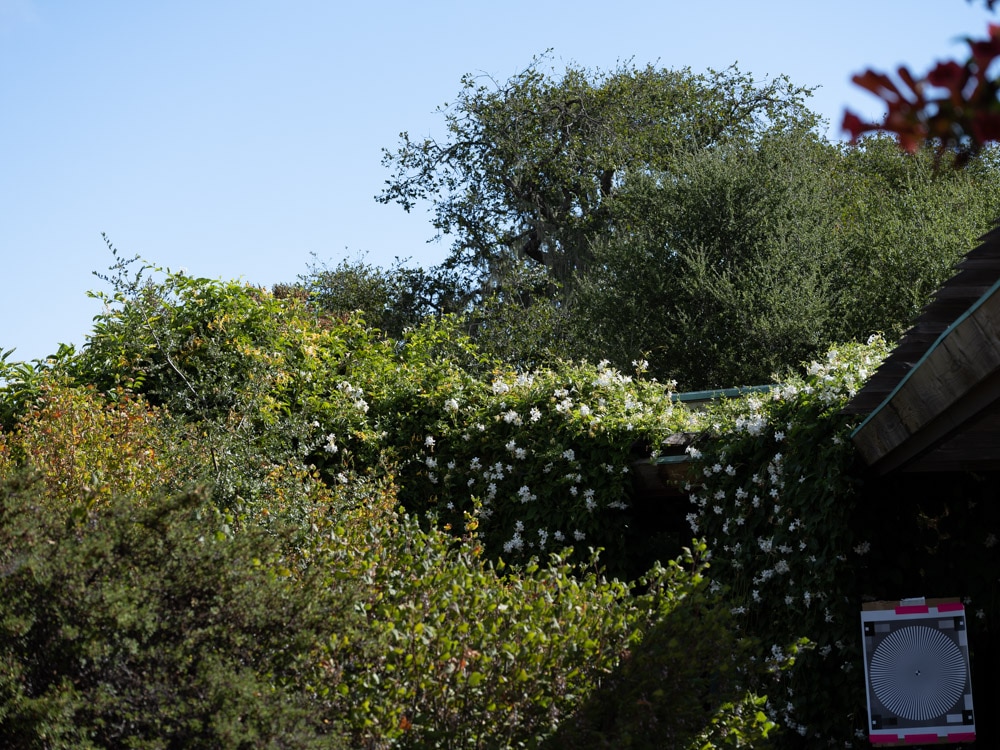
Using AF-S I made three exposures at each full stop from f/5.6 through f/11, and picked the sharpest one. I did that with both the GFX 100 and GFX 50R, with the lens focal length set to 100 mm and 200 mm. I developed the images in Lightroom with default settings, including s-shot white balance.
If you’ve seen these here before, just jump to the images. If not, I need to spend some time telling you how to interpret them. They’re at roughly 250% magnification, enlarged to 700 pixels high on export from Lightroom. If you just want a rough idea of the differences, just look at the images as displayed in-line in the posts. However, if you wish to compare these images in detail, you should view these images by clicking on them to see the source files, then set your browser for 100% zooming. Even better, download them and make Photoshop stacks.
No matter what you do, these crops are all going to look horrible. I’m blowing them up so much so that they will represent the original file after JPEG’s discrete cosine transform has had its way with them. If you want to get a good idea of what the images would look like printed, get far away from your monitor. No, farther than that. Put a bunch of the images up on the screen and back up until the best one starts to look good. Then look at the others. There’s another reason why these images won’t look like the best thing the camera/lens combination can deliver. They’re demosaiced with Lightroom. Lightroom is not awful, but for a particular image, there are usually better raw processors. I use Lr because it’s a de facto standard, because I know it well, and because it’s got good tools for dealing with groups of images.
Here’s how to use these highly-magnified crops. The dimensions of the GFX 50R sensor is 8256×6192 pixels. If we make a full-frame print from the GFX50 R on a printer with 360 pixels per inch native driver-level resolution, like the Epson inkjet printers, we’ll end up with a 23×17.2 inch print. The 283×219 pixel crop you’re looking at will end up 0.8×0.6 inches. Let’s imagine that you or your viewers are critical, and will look at the 23×17.2 inch print from about 18 inches (conventional wisdom is that the distance would be a little greater than that, or 29 inches (the diagonal), but you did buy a high-resolution camera for a reason, didn’t you?). The GFX 100 crops are 399×309, so they are blown up a bit less to make the picture height the same.
The next step is dependent on your monitor pitch, which you may or may not know. Turns out, you don’t have to know it. Just take the crops and view then at 1:1. How high are they? Get out your ruler and measure, or just guess. Let’s say they are 6 inches high. 6 inches is about 7 times 0.8, so in order to view the crops the way they’d look from 18 inches on the print is to view them from 7 times as far away, or 10.5 feet.
At 100 mm and f/5.6


False color is visible in the GFX 50R image. Look at the horizontal branch in the middle for an example. It’s still present in the GFX 100 image, but it is much diminished. The combination of the small microlenses and large pitch of the GFX 50R make the 50 MP image look jittery when compared to the 100 MP one. The differences are not nearly as apparent as they were with the Siemens Star target.
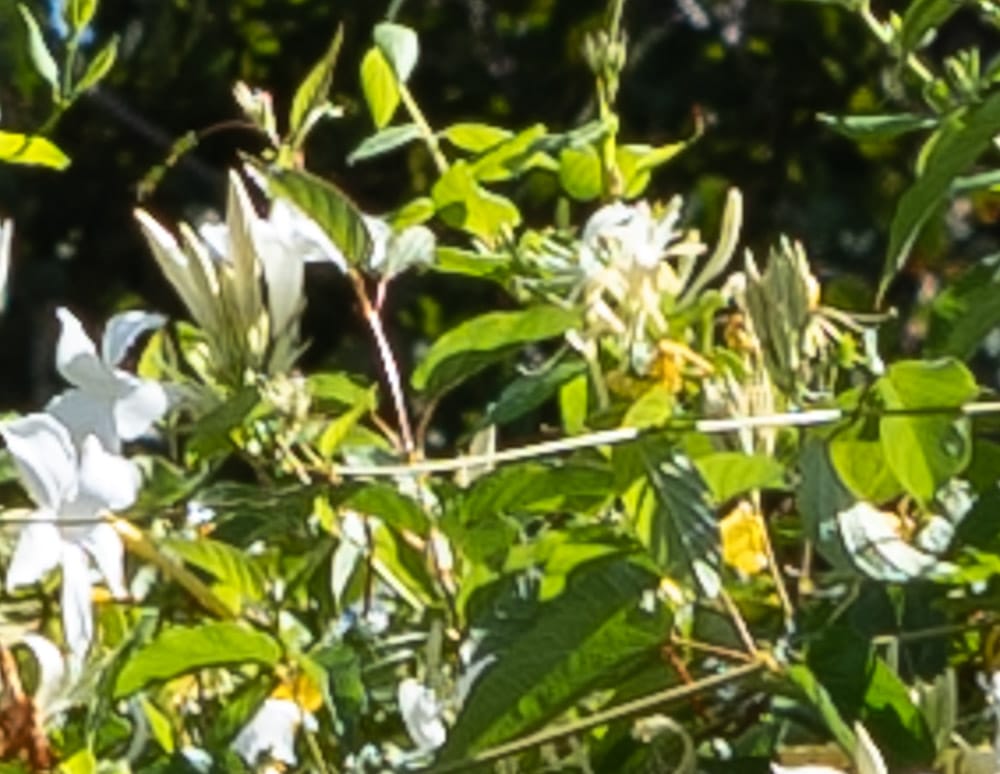
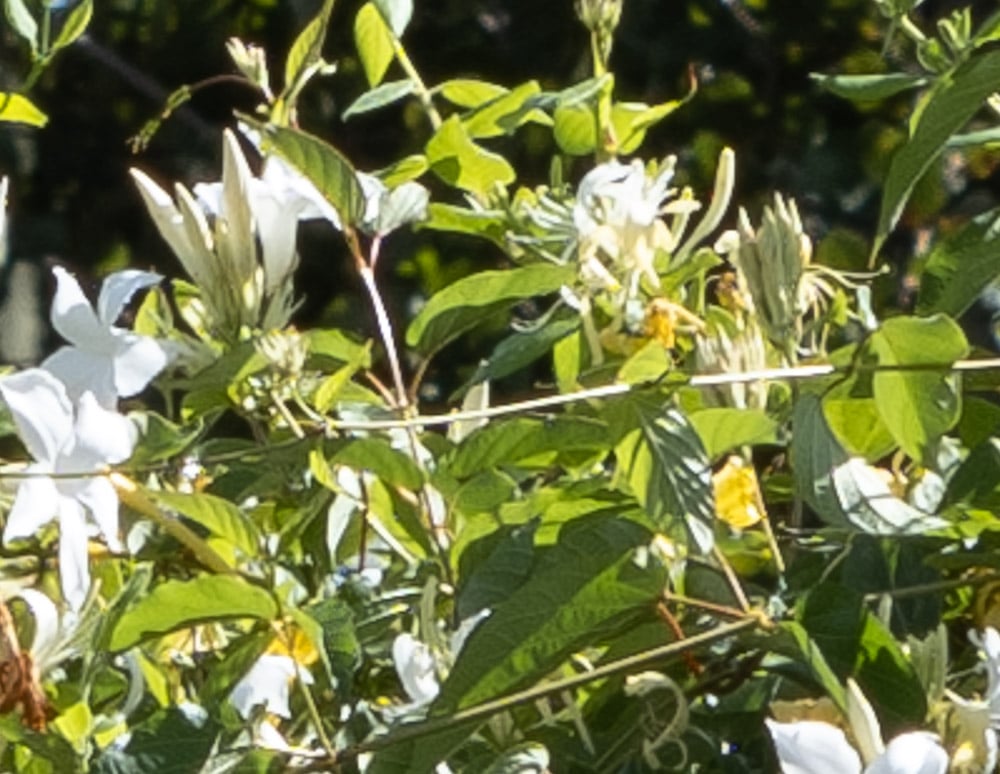
About the same.
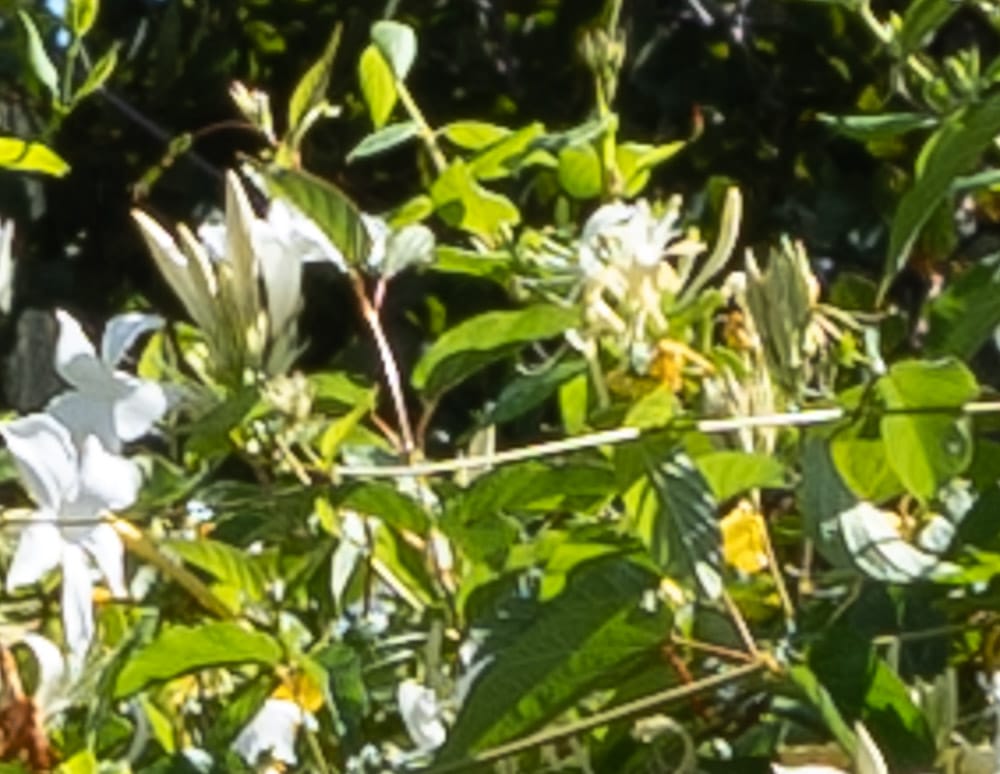

Diffraction makes the differences less apparent.
At 200 mm, where the 100-200/5.6 is markedly softer than at 100 mm:
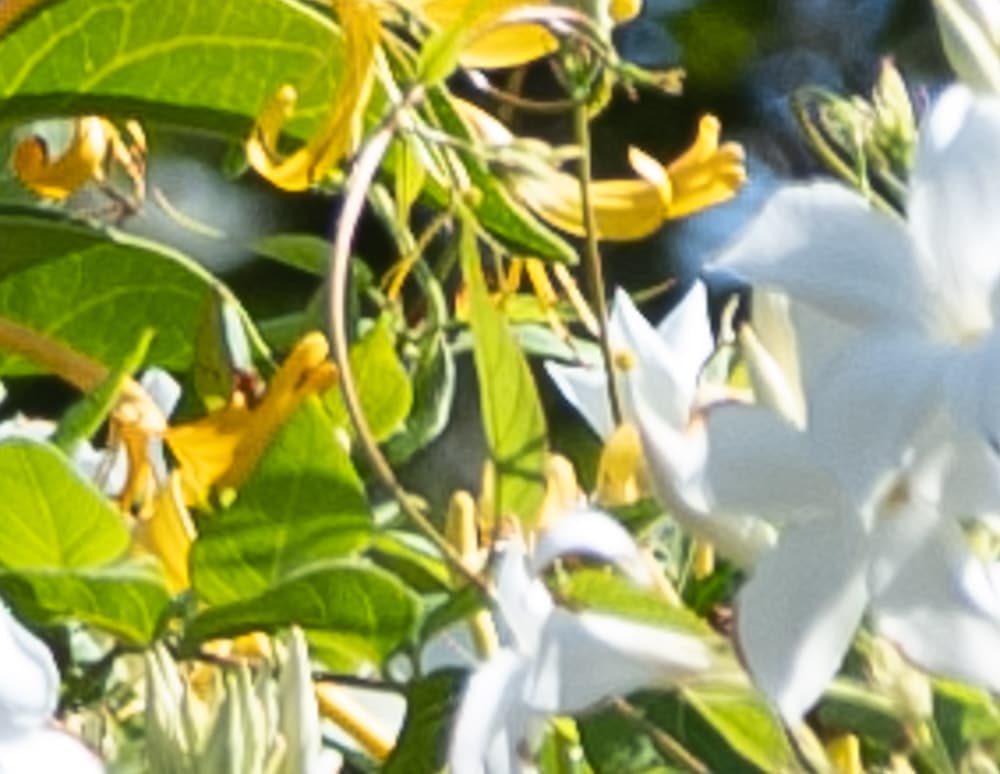

The combination of the softness of the lens and the lower spatial frequencies of the scene due to the higher magnification have made the differences much less significant.
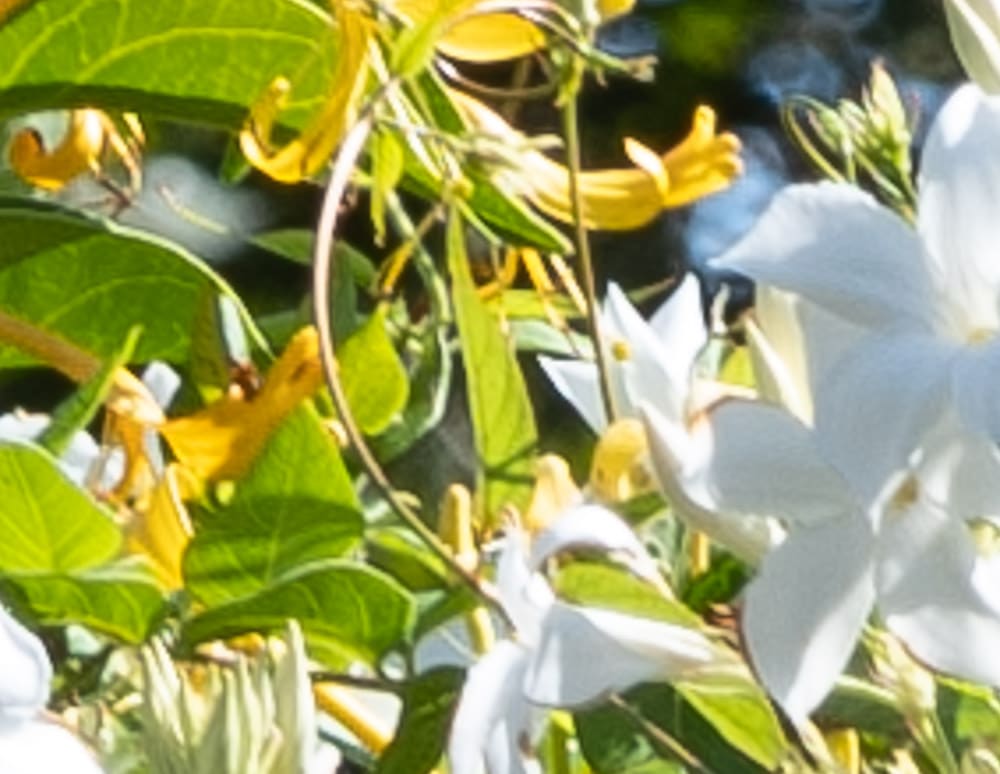



I think, although the GFX 100 images are more convincing, we’ve finally found the place where, at least for this subject, the extra resolution of the GFX 100 makes little significant difference.
David Berryrieser says
Thanks. Both this and the previous post are very helpful for intuitively understanding the differences between the two sensors.
JimK says
Just keep in mind that all of the other native lenses are sharper, in most cases by a lot
David Berryrieser says
Yep. And I have been following your other posts where you show the difference between the two using the 110. Showing the aperture series between the two cameras here is very useful as we see the images converge.